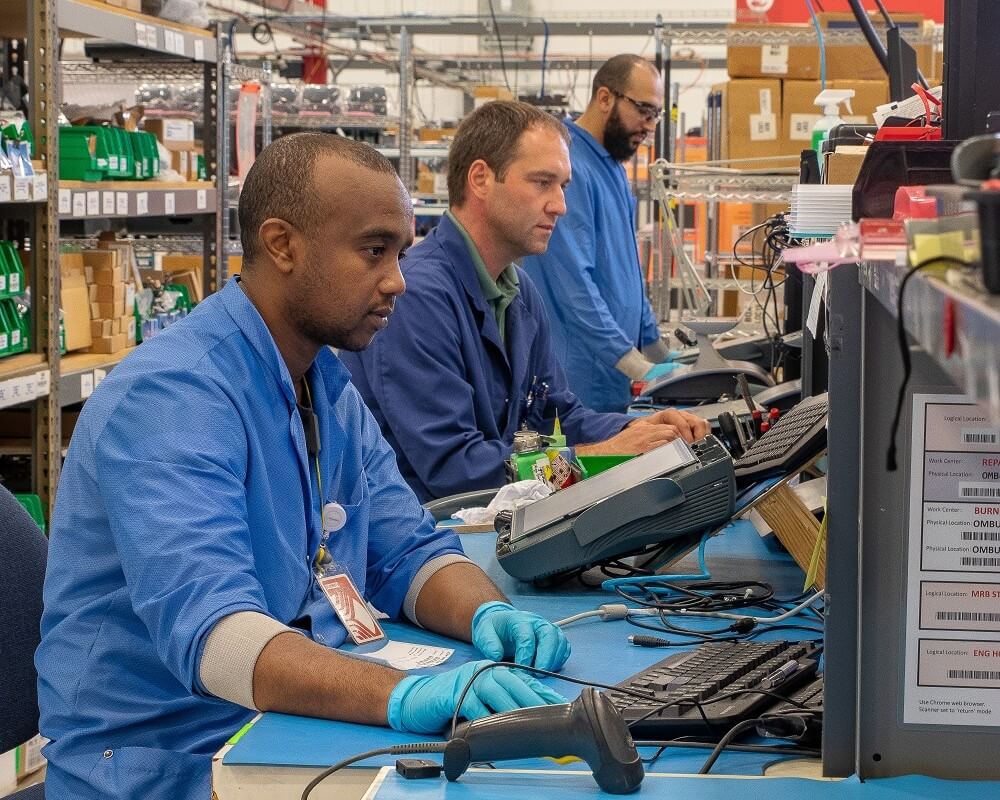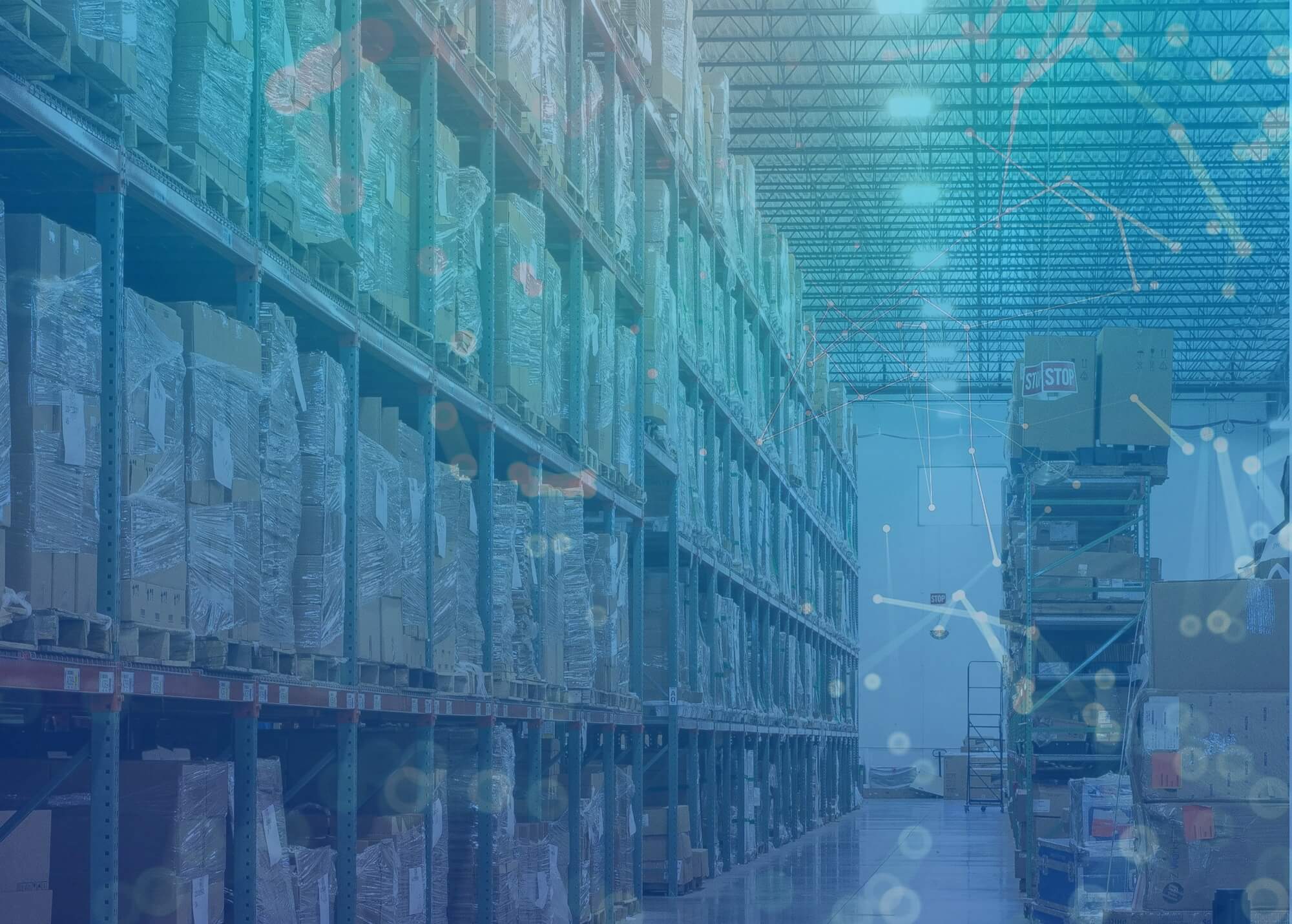This article was originally published in the Reverse Logistics Association's RL Magazine, Edition 109, July 2020. It was republished with their permission.
The circular economy offers OEMs in the enterprise technology market new revenue streams, improved sustainability and enhanced brand protection. By outsourcing downstream processes, including reverse logistics, repair services, de-manufacturing, warehousing and IT asset disposition, manufacturers can maximize product value and free up their resources to focus on new innovations.
Today’s technology manufacturing landscape is one of balance between meeting consumer hyper-demands for “the next big thing” and carefully managing finite resources. The circular economy is a global movement that attempts to strike that balance through reverse logistics, repair strategies and sustainable reuse. Original equipment manufacturers (OEMs) participating in the circular economy are leveraging sustainable practices to extend product lifecycles and capture value long after the initial product sale. By creating a circular strategy, OEMs position themselves as leaders in social responsibility, which helps protect and enhance their brand and reputation. However, to maximize the value of each product and build sustainability into manufacturing, OEMs need to rethink their downstream processes in a way that influences a shift in consumer behavior.
A circular economy strategy begins with product engineering. Historically, OEMs have designed for reuse, including the use of standardized shells and chassis that can be fitted with the latest generation of components. Reusable enterprise technology for networking, server and storage devices can extend your product’s lifecycle while offering a variety of approaches to recapture product value. However, without consolidating reverse logistics, repair and refurbishment into the product marketing strategy and making the process easy and accessible, manufacturers must rely on the consumer to decide if they will participate.
As enterprise technology customers modernize their in-house networking, storage and server solutions, they accumulate retired equipment. By focusing on downstream logistics, you can make your circular strategy attractive to customers. Extended warranty support, buy-back, trade-in and trade-up programs and IT asset disposition (ITAD) services give your customers more options and help close the gap on technology waste. With comprehensive reverse logistics and certified repair services fused into your product offerings, you can also recapture the gray repair market by ensuring customers’ products are repaired using OEM-approved processes, equipment and standards. And, by extending those services to customers as part of a purchase contract, you provide complete lifecycle management, which keeps you closer to your customer throughout product ownership and helps both your organization and your customers meet environmental impact goals.
One of the significant benefits of the circular economy for manufacturers is the potential for reclaiming components and raw materials. For example, during the server de-manufacturing process, working components can be reclaimed and put back into inventory to be used as spare parts. During repairs, damaged components can then be swapped for those reclaimed working parts. The damaged pieces can be fixed and made ready to repair the next device that comes in. This constant chain of reuse means your manufacturing line is making fewer components while keeping more consumer devices running. Additionally, parts from older devices can be reclaimed and reused if a customer requests a repair on a device that is no longer manufactured.
In recent years, consumers have shown a preference for replacement rather than repair, but that tide is shifting. B2B buyers are increasingly becoming more conscious of environmental impacts, and in many cases, must meet regulatory guidelines in terms of IT asset disposition. Many professional services vendors now offer a variety of repair and refurbishment services across the market. While these services are common, they vary vastly in quality. By embracing a circular strategy, you can gain greater control over the services offered to your customers, ensuring reliable quality. Rigorous testing and validation conducted by certified OEM specialists enables you to deliver high-quality repairs and refurbished equipment that keep customers satisfied. By gaining a reputation for offering dependable repair and refurbishment as part of the product lifecycle, you can continue to capture more of the aftermarket repair business to further protect your brand.
On the surface, these extra steps may seem like added expenses, but they can actually bring significant cost savings, opportunities for continual product improvements, new revenue streams and invaluable brand protection. Throughout the warranty period, repair processes offer insight into root cause analysis down to the circuit level, allowing you to correct defects before they become costly or cause damage to your brand reputation. Additionally, offering certified repair and refurbishment as part of the product sale or as an add-on service reduces the likelihood of substandard gray-market repairs, further protecting brand reputation. By offering comprehensive ITAD services, you can generate additional revenue streams while gaining the opportunity to break products down into reusable components, reclaim finite resources, save on costs and reduce waste and environmental impacts.
Having limited resources presents a considerable challenge for many manufacturers. An OEM’s core competency is bringing new products to market, so the staff and facilities required for comprehensive reverse logistics and circular economy support can place a significant strain on budgets and product delivery timelines. Thus, many manufacturers are outsourcing the capabilities required for supporting a circular economic strategy. Through partnership with a certified repair provider, manufacturers can expand their capabilities to include repair, refurbishment and materials reclamation. Moreover, with a qualified team, OEMs can monetize their reverse logistics and circular economy strategies by offering customers value-added services for post-warranty repair support, ITAD and more.
When IT lifecycle services management is your outsourcing vendor’s core competency, they can bring much to the table that may otherwise be overlooked. For example, the reverse logistics process starts with removing devices — and the confidential data they contain — from B2C and B2B customers. Understandably, enterprise customers in particular may be reluctant to surrender their storage devices unless assured that their data is safe. Certified repair providers that offer full visibility into each job provide peace of mind for both the customer and the manufacturer. That close attention to detail shows the customer that you are committed to data security, which can increase brand loyalty.
For de-manufacturing and refurbishment, many ITAD partners offer Department of Defense–grade data destruction for reclaimed devices. These rigorous processes ensure that customer data cannot be recovered, while also maintaining the integrity of the finite resources inside the device at the same time. That means more materials reclaimed and fewer devices incinerated, all while protecting the end-user.
In the vetting process, you should look for partners that support the enterprise product lifecycle beyond repair services. However, using multiple vendors can introduce inconsistencies and create inefficiencies, which can increase both your costs and your customers’ frustrations. By partnering with a single services vendor that covers the full IT lifecycle, you gain visibility across all facets of your circular strategy, including repair, maintenance, de-manufacturing, inventory management, customer satisfaction and more. You can also leverage your partner’s expertise to offer a portfolio of value-added services directly to customers, such as warranty support, post-warranty repair, refurbishment and ITAD. If your partner provides global services, you can expand your reach and optimize your circular strategy by offering equitable services to all your customers, no matter where they are.
Our world is one of finite resources and ever-increasing demands for enterprise storage, compute power and network connectivity. Sustainability must take priority — especially in technology manufacturing — and the industry is going to have to shift toward reuse to keep up with demands. By engineering reusability into your products, building reverse logistics into your portfolio and partnering with a certified IT lifecycle services vendor, you can spearhead the circular economy industry shift while reducing costs, opening up new revenue streams and potentially causing a shift in consumer thinking and behavior. Acting now generates a significant opportunity to set your brand apart as a global leader in environmental impact reduction.
Author Bio
Bobby Wallace has been with Shyft Global Services for 14 years and currently serves as the General Manager for the flagship Shyft service center based in Groveport, Ohio. As GLM’s repair services competency leader, Bobby focuses on customer growth, delivery and end-to-end business and portfolio management. His professional experience includes leadership in a variety of supply chain, technical operations and customer support roles.
About Reverse Logistics Association
The Reverse Logistics Association is the authoritative body for best practices related to reverse logistics. RLA is a member-driven, global trade association for the returns and reverse industry. The RLA offers information, research, solutions, and facilitates networking introductions for manufacturers, retail companies and third-party providers. Our goal is to educate and inform reverse logistics professionals globally and be the voice of the reverse industry.




